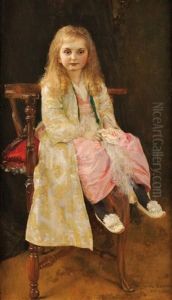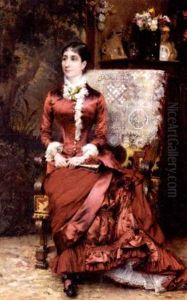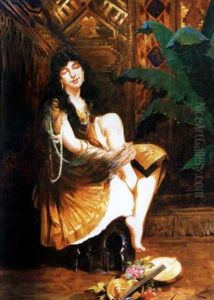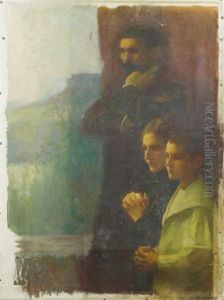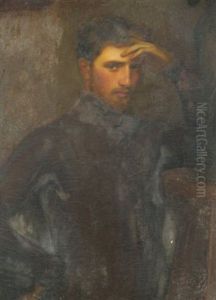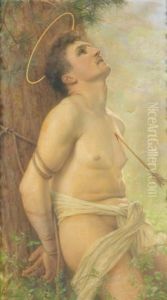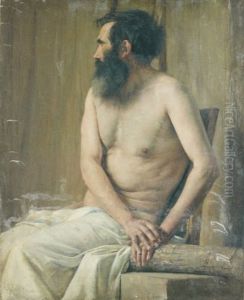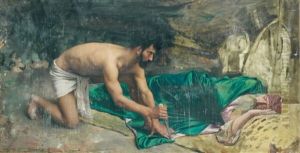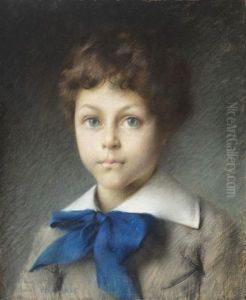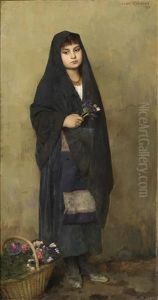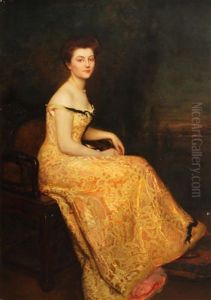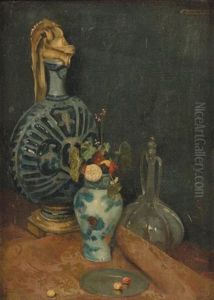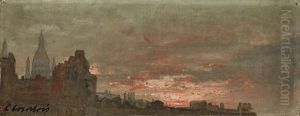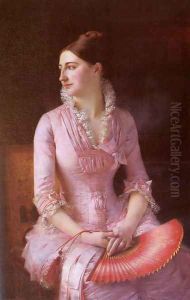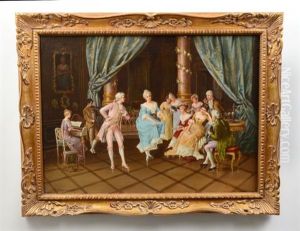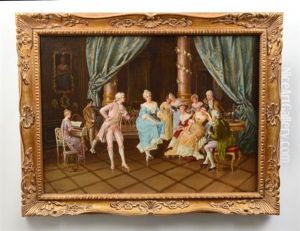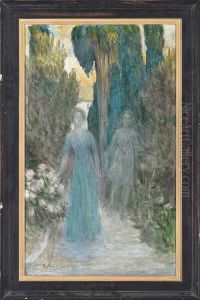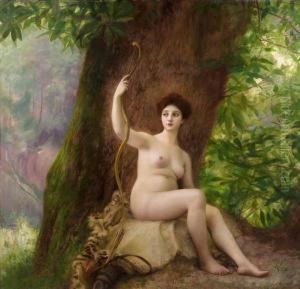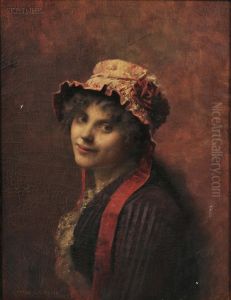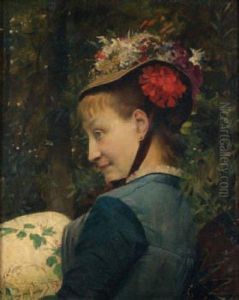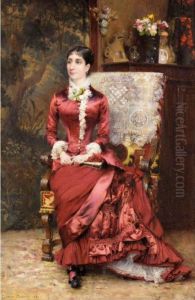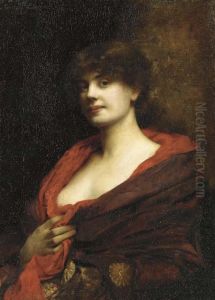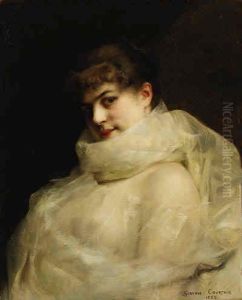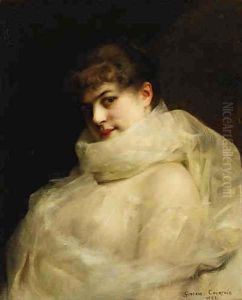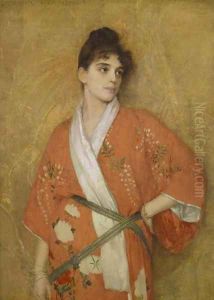Gustave Claude Etienne Courtois Paintings
Gustave Claude Etienne Courtois was a notable French painter, born on April 18, 1853, in Pusey, Haute-Saône, France. He is often associated with the academic style of painting and is known for his classical and mythological subjects, as well as for his portraits.
Courtois showed artistic talent from a young age and pursued his passion for art by enrolling at the École des Beaux-Arts in Paris. There, he was a student under the prominent academic painters Alexandre Cabanel and Pierre Puvis de Chavannes, both of whom had a significant influence on his artistic development. Courtois's skillful execution and adherence to the academic standards of the time quickly brought him recognition.
In 1875, Courtois won the coveted Prix de Rome with his painting 'Ulysses Recognized by His Nurse.' This prestigious award granted him a scholarship to study at the French Academy in Rome, located in the Villa Medici, where he would spend several years honing his craft. The time he spent in Italy deeply influenced his work, as he was exposed to the masterpieces of the Renaissance and the rich artistic traditions of the region.
Courtois was known for his mastery in figure painting, and his works often reflected the academic tradition of idealized beauty and precise anatomical rendering. He became a respected professor at the École des Beaux-Arts, mentoring a new generation of artists and sharing his knowledge and techniques. His teaching and his art were both characterized by a rigorous adherence to the aesthetics of academic art, though he also showed an openness to the evolving styles of his time.
Throughout his career, Courtois exhibited his works at the Paris Salon, the official art exhibition of the Académie des Beaux-Arts in Paris. His paintings were well received, and he was awarded several medals, reflecting his status as a celebrated artist of his era. He was also made a Knight of the Legion of Honor, one of France's highest distinctions for contributions to the arts.
Gustave Courtois's works can be found in various museums and collections around the world. He continued to paint and teach until his death on May 20, 1923, in Paris. His legacy lives on through his contributions to French art and his influence on the students he taught, many of whom went on to have successful artistic careers of their own.

